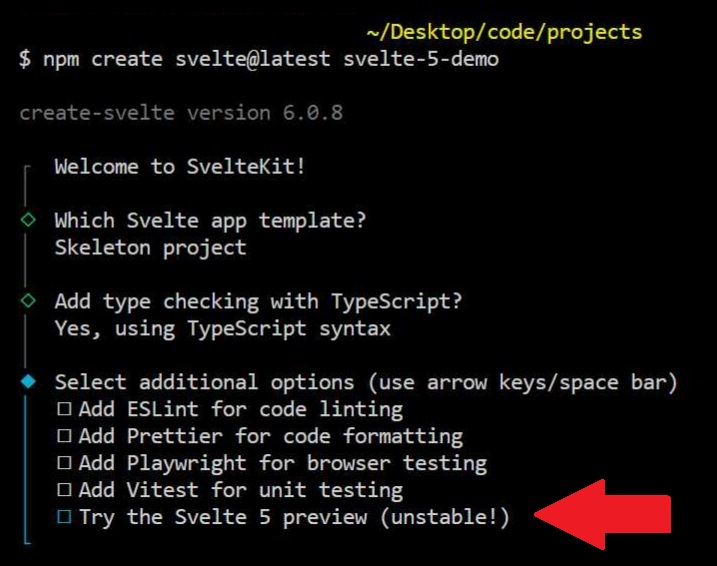In the ever-evolving landscape of web development, the quest for performance and superior user experience is relentless. For years, developers have grappled with the challenge of making server-rendered websites interactive. The traditional approach, known as hydration, involves rendering a full application on the client-side to “take over” the static HTML from the server. While effective, this often leads to a noticeable delay before the page becomes interactive and can involve shipping large JavaScript bundles. The latest Svelte news, however, introduces a paradigm-shifting feature in Svelte 5 that directly addresses this challenge: Attachments. This powerful new API allows developers to surgically attach Svelte’s reactive capabilities to existing DOM elements, a concept that promises to redefine progressive enhancement. Instead of replacing the server-rendered DOM, Svelte now lets you enhance it, leading to faster load times, a smaller client-side footprint, and a more elegant way to modernize existing websites or build highly performant new ones. This article provides a comprehensive exploration of Svelte Attachments, from core concepts to advanced implementation and best practices.
Understanding the Core Concepts of Svelte Attachments
To fully appreciate the innovation of Svelte Attachments, it’s crucial to first understand the problem it solves. The web development community, from those following React News to the latest in Vue.js News, has long debated the best way to bridge the gap between static server output and dynamic client-side applications.
The Problem with Traditional Hydration
Hydration is the process used by most modern frameworks like React, Vue, and Angular to make a server-rendered page interactive. The server sends a fully-formed HTML page, and along with it, the JavaScript for the entire application. Once the JavaScript loads, the framework re-creates a virtual representation of the DOM and compares it to the existing HTML. If they match, it attaches event listeners. This process, while functional, has drawbacks:
- Performance Overhead: The client’s browser must download, parse, and execute the framework and application code, then perform the diffing process before the page is truly interactive. This can be slow on less powerful devices or poor network conditions.
- The “Uncanny Valley”: The page looks ready, but buttons and inputs don’t work until hydration is complete, leading to user frustration.
- Duplicated Work: The component logic is essentially run twice—once on the server to generate HTML and again on the client to hydrate.
Frameworks like SolidJS and Preact have made strides in optimizing this, but the fundamental overhead remains. This is the context into which Svelte Attachments emerge as a compelling alternative.
Introducing a New Paradigm: Attachment
Svelte Attachments flip the script. Instead of assuming the client needs to rebuild and verify the DOM, it trusts that the server-rendered HTML is correct. The “attachment” process simply finds a target DOM element and wires up the Svelte component’s logic—its state, event handlers, and lifecycle functions—directly to that element and its children. It doesn’t re-render or replace the HTML; it enhances it. This approach is significantly more efficient because it avoids the costly virtual DOM diffing and re-rendering steps associated with hydration. Let’s look at a simple component we might want to attach.
<!-- Counter.svelte -->
<script>
import { state } from 'svelte';
let { initialCount = 0 } = $props();
let count = state(initialCount);
function increment() {
count++;
}
function decrement() {
count--;
}
</script>
<div class="counter">
<h3>Svelte Counter</h3>
<p>Current count: {count}</p>
<button onclick={decrement}>-</button>
<button onclick={increment}>+</button>
</div>This is a standard Svelte 5 component. With the new API, we can take this component’s logic and apply it to a piece of HTML that already exists on the page.
Step-by-Step Guide to Implementing Svelte Attachments
Putting Svelte Attachments into practice is remarkably straightforward. It seamlessly integrates into modern development workflows, whether you’re using a backend built with the latest from Node.js News, like Express.js or Fastify, or a more traditional CMS. The key is a clear separation between the server-generated markup and the client-side enhancement script.
The Server-Side Rendered HTML

First, imagine your server generates the following HTML. This could be from any backend technology, from a PHP application to a project built with AdonisJS or Meteor. The important part is that the structure matches what our Svelte component expects, and we have a clear target for our attachment, like an ID.
<!DOCTYPE html>
<html lang="en">
<head>
<meta charset="UTF-8">
<meta name="viewport" content="width=device-width, initial-scale=1.0">
<title>Svelte Attachment Demo</title>
<!-- Our client-side script will be loaded here -->
<script src="/bundle.js" defer></script>
</head>
<body>
<h1>Welcome to Our Page</h1>
<p>This page is mostly static, but the component below is interactive.</p>
<!-- This is the DOM node we will attach our Svelte component to -->
<div id="interactive-counter" class="counter">
<h3>Svelte Counter</h3>
<!-- The initial state is rendered by the server -->
<p>Current count: 5</p>
<button>-</button>
<button>+</button>
</div>
<p>Some more static content here...</p>
</body>
</html>Notice that the HTML for the counter is already present, including the initial count of 5. Our goal is to make the buttons work without re-rendering this entire section.
The Client-Side Attachment Script
Next, we create a small JavaScript file that will be compiled by a modern build tool. The latest Vite News and Webpack News confirm that these tools are perfectly equipped for handling Svelte 5. This script imports our component and uses the new `attach` option in the component constructor.
// main.js
import Counter from './Counter.svelte';
// Wait for the DOM to be fully loaded
document.addEventListener('DOMContentLoaded', () => {
// Find the target element on the page
const targetElement = document.getElementById('interactive-counter');
if (targetElement) {
// Instantiate the component, attaching it to the existing DOM node
new Counter({
// The 'attach' property is the key to this new feature
attach: targetElement,
// We can pass props to initialize the component's state
props: {
initialCount: 5
}
});
}
});That’s it. When this script runs, Svelte finds the element with the ID `interactive-counter`. It then scans the element’s children, finds the two `
Advanced Use Cases for Svelte Attachments
The true power of Svelte Attachments shines in more complex, real-world scenarios. It’s not just for simple counters; it’s a tool for building sophisticated, high-performance applications and modernizing legacy codebases.
Dynamic Initial State and Complex Props
In a real application, the initial state is rarely hardcoded. It usually comes from a database. A common pattern is to have the server embed this state as JSON within a `

